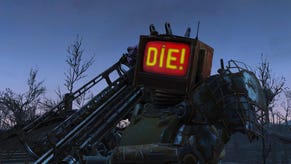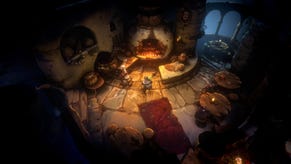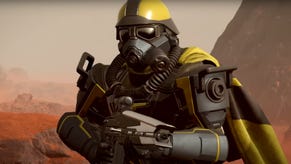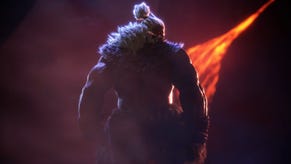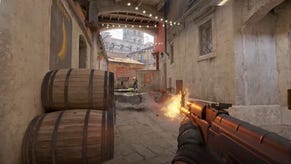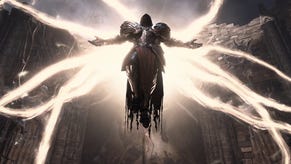Stellar Blade’s combat takes a lot from Sekiro, so why does it feel different?
Stellar Blade is a fun action game, except when you try to play it like Sekiro: Shadows Die Twice.
I know exactly what you’re thinking after reading this headline. Why would you go into one game expecting it to play like some other one you like? After all, it doesn’t make sense to burden it with the expectations we have from playing another, especially if it never explicitly positioned itself as a spiritual successor or anything.
Something about Stellar Blade - the upcoming PS5 action RPG from developer Shift Up, however, always gave me Sekiro: Shadows Die Twice vibes, and I’d wager it has a lot to do with its parry-heavy combat. So I couldn’t help but get into the Stellar Blade demo with that mindset.
When you initially get your hands on Sekiro, the game appears to nudge you to play it defensively. One of the first things it teaches you is how to parry, which you do by watching for enemy attack cycles, so you can better anticipate their moves, deflect what you can and block the rest. You quickly realise, however, that to do well at Sekiro, you need to actually be a lot more aggressive than the game initially suggests.
Stellar Blade starts off in a similar way; with an emphasis on anticipation and defensive play. It does not, however, transition into the other half of that push because of a few unfortunate shortcomings. Enemy attack readability is the most obvious one. This is an element that games often botch. Done right, it can make you feel like Neo in The Matrix; always one step ahead of your opponent. Done wrong, however, and you’re left constantly questioning your ability to truly anticipate enemy moves.
The more rapid their attack flurries get, the harder it becomes to discern whether you mis-timed your parries or they were simply not meant to be parried in the first place. It’s never good to have to spend anytime guessing whether it’s you or the game.
Stellar Blade’s tutorials explain that you need to parry enough attacks to stagger the enemy, opening them up for a Retribution move that deals heavy damage. This approach is fine on paper, but it lessens the effect of each individual parry, and robs you of the momentary satisfaction you get in a game like Sekiro every time you parry an attack.

It feels unnecessarily clunky, and I really do wonder what sort of combat Stellar Blade wants to create. There’s an emphasis on animation priority that aligns it more with a Soulslike, but the style and flair of the animations themselves give it the appearance of a spectacle fighter or a character action game.
Character animations and general movement suffer from that same dichotomy. It takes too long to bounce back after being knocked down, for instance, and the existence of an item wheel means you’ll be pausing the fight often - if you want to select healing items, grenades, mines and whatever other bits of kit that give you a leg up in combat.
Animation priority and a certain degree of input lag could make sense in one subgenre, but not the other, and I don’t feel Stellar Blade is confident enough to bridge that gap. Even Sekiro had to pick its battles, which ended up causing it to stray farther away from the typical Souls formula than any other FromSoft game before it.
Stellar Blade finds its character when it tries to look stylish, but keeps sabotaging itself by introducing moves that require the type of player skill reserved for Soulslikes. Devil May Cry and co obviously require skill, but they reward the player by rating their performance, not outright killing them. Stellar Blade’s Blink and Repulse are effectively alternate dodge moves that look fantastic in motion, but don’t feel good to use because they rely on moving the left stick in one direction while pressing a button, and they can only be done in response to certain enemy attacks.
Not only does that make for a binary, rock-beats-paper type of approach, it once again slows down combat as you try to cycle through the mental stack of the half-a-dozen moves you’ve learned and decide which one is appropriate in this instance. A much better approach would’ve been to give players the choice of unlocking (or not) those abilities, and let them decide when/if to use them at all.
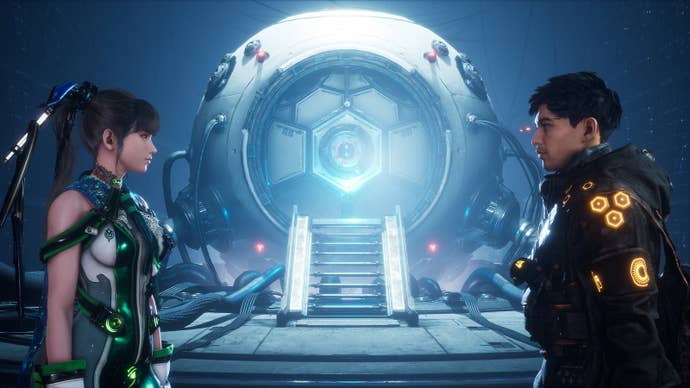
The deeper I tried to dissect Stellar Blade’s moment-to-moment, the more I realised it has one foot in character action and the other in Souls. It’s not forgiving enough, or reliant on style over skill for it to land in the former camp, and its animations lack the clarity and finesse the latter require to create consistently fair fights.
I’ve played through the demo a few times (including the bonus boss) just to try to get a feel for the pace of combat, but I couldn’t comfortably land on a rhythm that worked well. Smaller details like not being able to tell which attacks can be cancelled into a block and which can’t made it difficult to settle into that comfortable rhythm.
It’s likely too late to expect Stellar Blade to commit to either one of its core influences, but I just hope the final version is at least more refined. I’m happy to meet it where it is, even if that’s the jumbled up creature of spectacle fighters and Soulslikes.
.jpg?width=690&quality=80&format=jpg&auto=webp)

